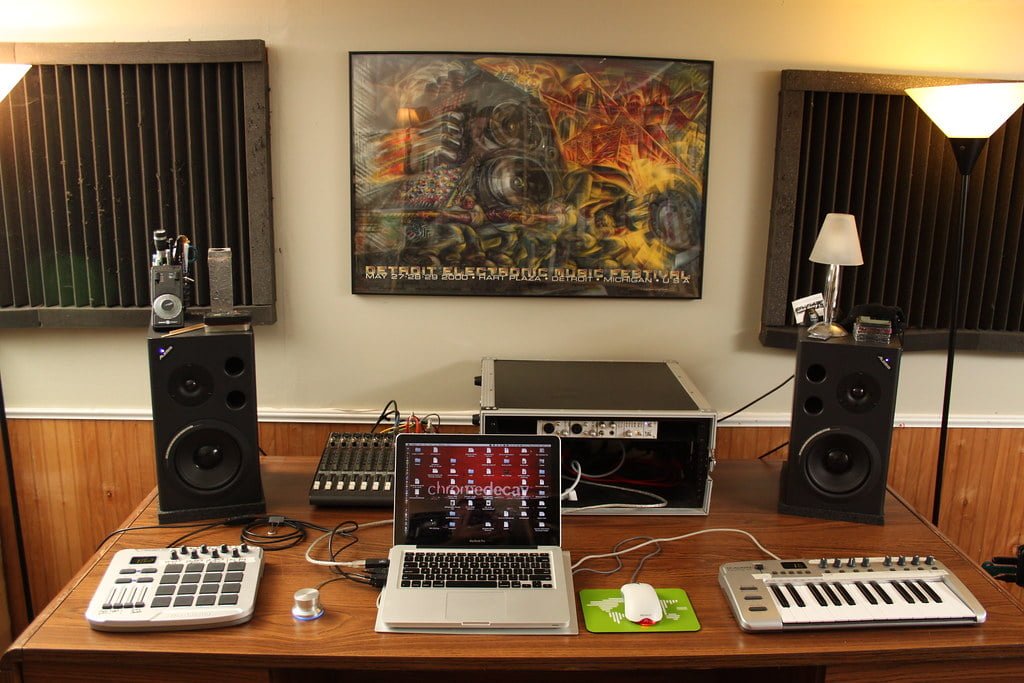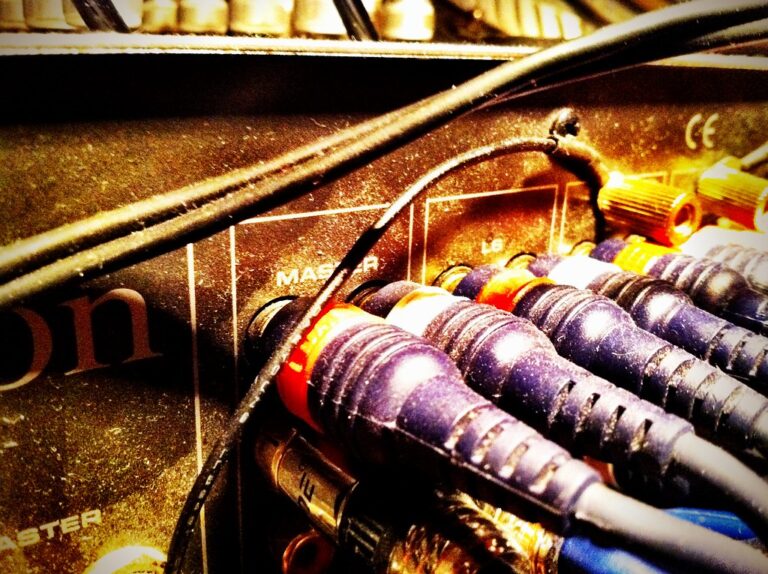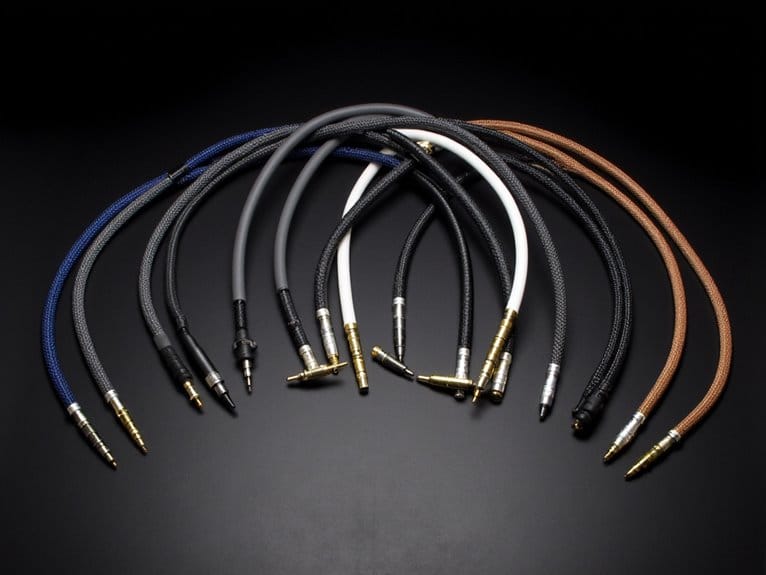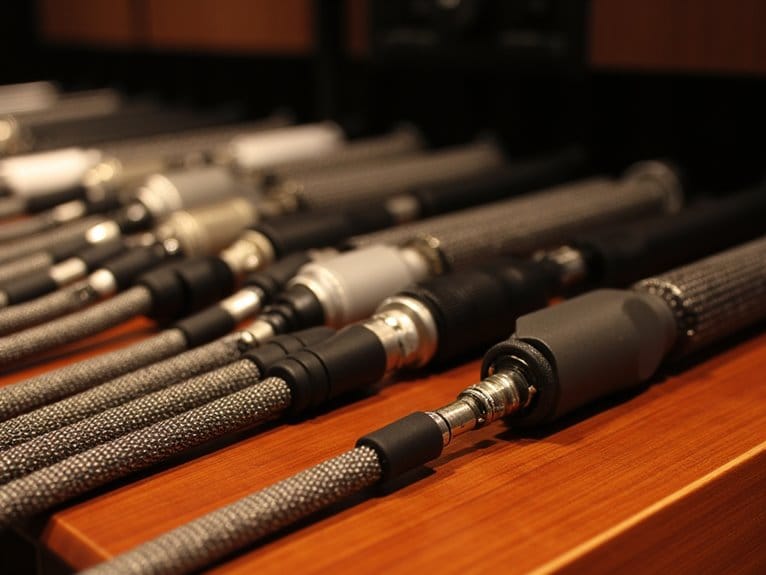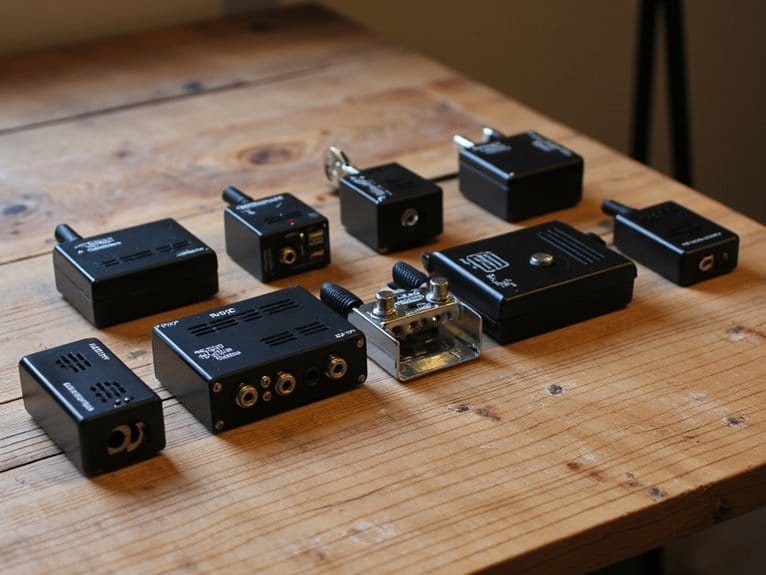Cable Length and Signal Loss: Best Practices for Various Studio Setups
Have you ever wondered how the length of your cables could impact the quality of your studio setup? Understanding the relationship between cable length and signal loss is fundamental in maintaining peak performance. By implementing best practices tailored to different studio configurations, we can guarantee that our audio and video signals remain pristine and interference-free. Let’s explore the nuances of cable length management and signal integrity optimization to elevate our studio production standards.
We are supported by our audience. When you purchase through links on our site, we may earn an affiliate commission, at no extra cost for you. Learn more.
Understanding Signal Loss in Cables
When cables lengthen, signal loss escalates due to resistance and capacitance hindering the transmission of audio signals. Resistance in a cable leads to the conversion of electrical energy into heat, which diminishes the strength of the signal as it travels across the conductor. Capacitance, on the other hand, causes the cable to act as a capacitor, storing and releasing electrical energy as the signal propagates, thereby distorting the original signal waveform.
Factors such as cable quality and shielding play important roles in combating signal loss over extended lengths. High-quality cables with better insulation materials reduce resistance and capacitance, thereby preserving the integrity of the audio signal. Shielding helps protect the signal from external interference sources that could exacerbate signal loss.
Maintaining signal integrity is paramount in studio environments where audio quality is essential. Proper cable management practices, such as avoiding sharp bends or kinks, can alleviate stress on cables, preventing signal degradation. Additionally, the strategic placement of signal boosters along the signal path or using fiber optic solutions can effectively mitigate signal loss in long cable runs, ensuring the best audio transmission within the studio setup.
Cable Length Considerations for Studios
Considering the impact of cable length on signal integrity in studio environments, it is imperative to evaluate specific length considerations for best audio transmission quality. Longer cable lengths introduce resistance and capacitance, resulting in signal loss during audio transmission. This signal loss is influenced by various factors such as cable quality, construction, and shielding effectiveness. High-frequency signals, in particular, are more prone to degradation over extended cable lengths due to increased impedance along the transmission path.
To mitigate signal loss issues in studio setups, proper cable management practices are essential. Using high-quality cables with effective shielding can greatly improve signal integrity and reduce the risk of degradation over longer distances. Understanding the relationship between cable length and signal loss is vital for ensuring high audio quality in different studio configurations. By selecting the appropriate cable lengths and maintaining adequate signal strength through quality cable choices, studios can minimize signal degradation and maintain top-notch audio transmission throughout their setups. Properly managing cable lengths and investing in high-quality cables are key steps in preserving signal quality and achieving top-notch audio performance within studio environments.
Signal Quality Maintenance Tips
For best maintenance of signal quality in studio setups, utilizing high-quality cables with effective shielding is essential. Ensuring top-notch signal integrity is critical in preventing electromagnetic interference (EMI) and maintaining signal strength throughout the studio environment. To achieve this, consider the following signal quality maintenance tips:
- Use High-Quality Cables: Invest in high-quality cables with robust shielding to minimize signal loss and interference.
- Implement Proper Cable Routing: Organize cables carefully to avoid tangling and prevent signal degradation due to stress on the cables.
- Consider Signal Boosters: When dealing with lengthy cable runs, consider using signal boosters or repeaters to amplify the signal strength and maintain signal integrity.
- Explore Fiber Optic Solutions: In demanding studio setups, opt for active optical cables (AOC) or fiber optic solutions to reduce signal loss and guarantee consistent signal quality over long distances.
Best Practices for Signal Integrity
To maintain perfect signal integrity in studio setups, careful consideration of cable length and quality is paramount. When dealing with long cable lengths, signal loss becomes a significant concern. Shielded cables play a vital role in mitigating this loss by reducing electromagnetic interference and maintaining the signal’s strength over extended distances. Using balanced cables can also help combat signal degradation by canceling out noise picked up along the cable.
In instances where long cable runs are unavoidable, signal boosters or repeaters can be employed to amplify the signal periodically, ensuring that it remains robust throughout the transmission. These boosters help counteract the effects of resistance and capacitance that increase with cable length, ultimately preserving signal integrity.
For even greater signal integrity over extended distances, Active Optical Cables (AOC) offer a solution. By utilizing optical fibers instead of traditional copper conductors, AOCs minimize signal loss significantly, making them ideal for demanding studio setups where maintaining pristine audio quality is essential.
Moreover, proper cable management practices are essential to prevent unnecessary stress on the cables, which could lead to signal degradation. By organizing and securing cables effectively, the risk of signal loss due to physical damage or interference is reduced, ensuring the best signal integrity in the studio environment.
Optimizing Cable Performance
Optimizing cable performance involves strategically managing signal loss to maintain high-quality audio and video transmissions. When dealing with audio and video signals, the following practices can help enhance cable performance:
- Use high-quality cables: Opt for cables with proper shielding to minimize signal loss over extended distances.
- Consider signal boosters: Signal boosters or repeaters can amplify weakened signals at intervals, ensuring signal integrity is maintained throughout the transmission.
- Monitor cable lengths: Longer cable lengths increase resistance and capacitance, leading to signal loss. Keeping cable lengths within recommended limits can help mitigate signal degradation.
- Explore fiber optic solutions: Active optical cables (AOC) or fiber optic solutions are effective in reducing signal loss over long distances, making them ideal for maintaining high-quality audio and video transmissions in studio setups.

